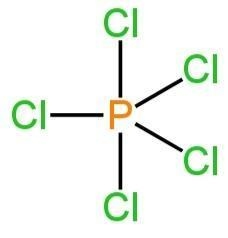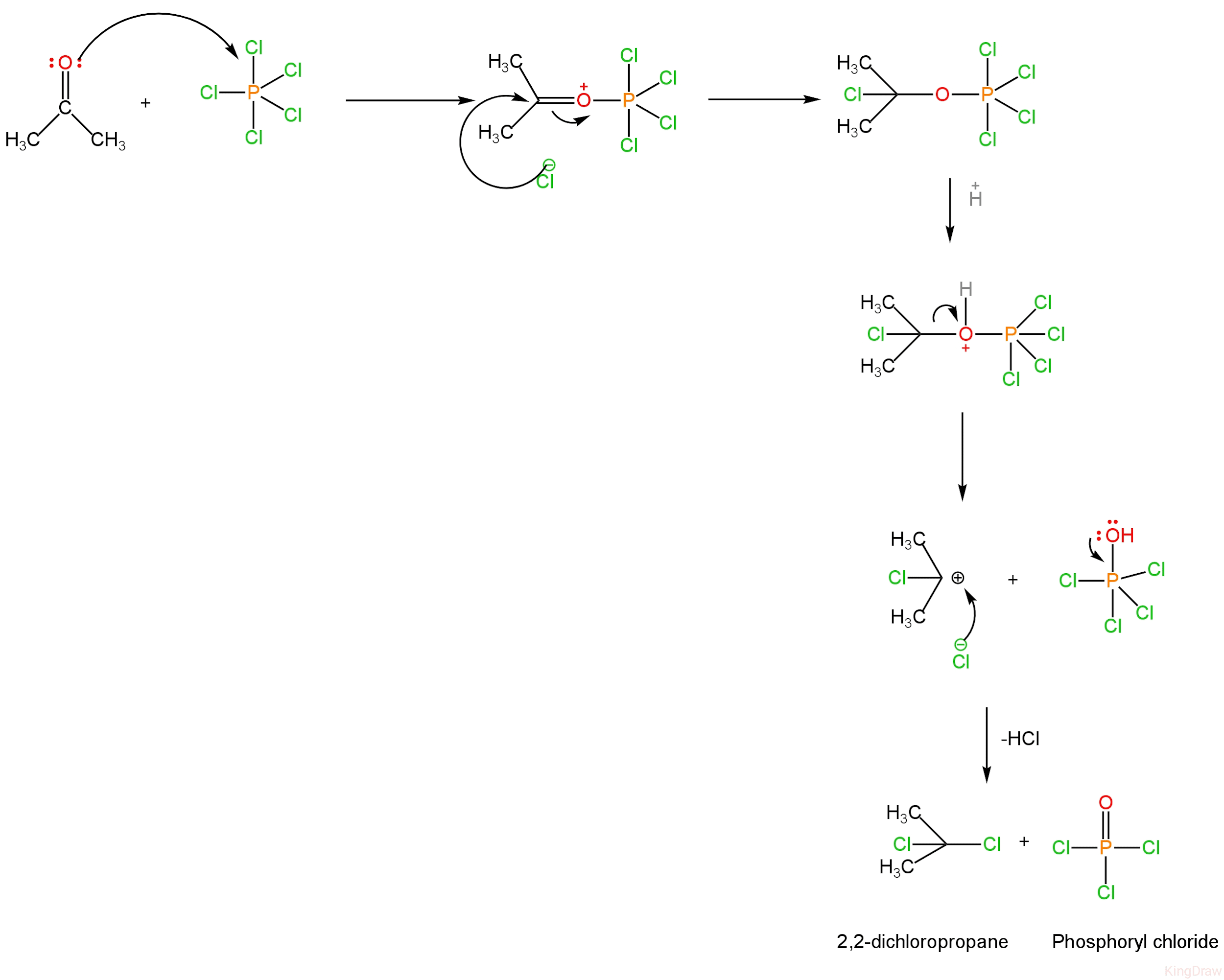Answer
57.9k+ views
Hint: Phosphorus pentachloride is the name of the chemical compound PCl₅. It is a significant phosphorus chloride and is used as a chlorinating reagent. When this compound is treated with ketones, chlorination transpires at the carbonyl carbon.
Complete Step by Step Solution:
Phosphorus pentachloride is the chemical compound possessing the formula PCl5.
It is one of the considerably crucial phosphorus chlorides alongside\[PC{l_3}\] and\[POC{l_3}\].
\[PC{l_5}\] is utilised as a chlorinating reagent.
It has no colour and is sensitive to moisture and water.
Its structure is as follows:

Image: Structure of phosphorus pentachloride
When it reacts with carbonyl groups like in ketones it leads to the conversion of C=O groups to \[CC{l_2}\]groups.
So, when it reacts with propanone it converts the C=O group to the CCl2 group.
Mechanism
1. The lone pair of oxygen in the carbonyl group attacks the phosphorus atom present in phosphorus pentachloride leading to the formation of a complex.
2. The complex formed when treated with a proton leads to the breaking of the carbon and oxygen bond. A carbocation is formed.
3. Carbocation is attacked by chloride ions present in the medium forming 2,2-dichloropropane and Phosphoryl chloride along with it which is a side product.

Image: Mechanism of chlorination of propanone.
As we know, 2,2-dichloropropane is a gem-dichloride. So, D is correct.
So, option D is correct.
Note: Phosphorus pentachloride also transforms alcohols into alkyl chlorides. This reaction is used in the preparation of alkyl chlorides. But thionyl chloride is more generally utilised in the laboratory as the resultant sulphur dioxide is a gas, and hence is more effortlessly isolated from the organic products than \[POC{l_3}\].
Complete Step by Step Solution:
Phosphorus pentachloride is the chemical compound possessing the formula PCl5.
It is one of the considerably crucial phosphorus chlorides alongside\[PC{l_3}\] and\[POC{l_3}\].
\[PC{l_5}\] is utilised as a chlorinating reagent.
It has no colour and is sensitive to moisture and water.
Its structure is as follows:

Image: Structure of phosphorus pentachloride
When it reacts with carbonyl groups like in ketones it leads to the conversion of C=O groups to \[CC{l_2}\]groups.
So, when it reacts with propanone it converts the C=O group to the CCl2 group.
Mechanism
1. The lone pair of oxygen in the carbonyl group attacks the phosphorus atom present in phosphorus pentachloride leading to the formation of a complex.
2. The complex formed when treated with a proton leads to the breaking of the carbon and oxygen bond. A carbocation is formed.
3. Carbocation is attacked by chloride ions present in the medium forming 2,2-dichloropropane and Phosphoryl chloride along with it which is a side product.

Image: Mechanism of chlorination of propanone.
As we know, 2,2-dichloropropane is a gem-dichloride. So, D is correct.
So, option D is correct.
Note: Phosphorus pentachloride also transforms alcohols into alkyl chlorides. This reaction is used in the preparation of alkyl chlorides. But thionyl chloride is more generally utilised in the laboratory as the resultant sulphur dioxide is a gas, and hence is more effortlessly isolated from the organic products than \[POC{l_3}\].
Recently Updated Pages
Write a composition in approximately 450 500 words class 10 english JEE_Main

Arrange the sentences P Q R between S1 and S5 such class 10 english JEE_Main

What is the common property of the oxides CONO and class 10 chemistry JEE_Main

What happens when dilute hydrochloric acid is added class 10 chemistry JEE_Main

If four points A63B 35C4 2 and Dx3x are given in such class 10 maths JEE_Main

The area of square inscribed in a circle of diameter class 10 maths JEE_Main



